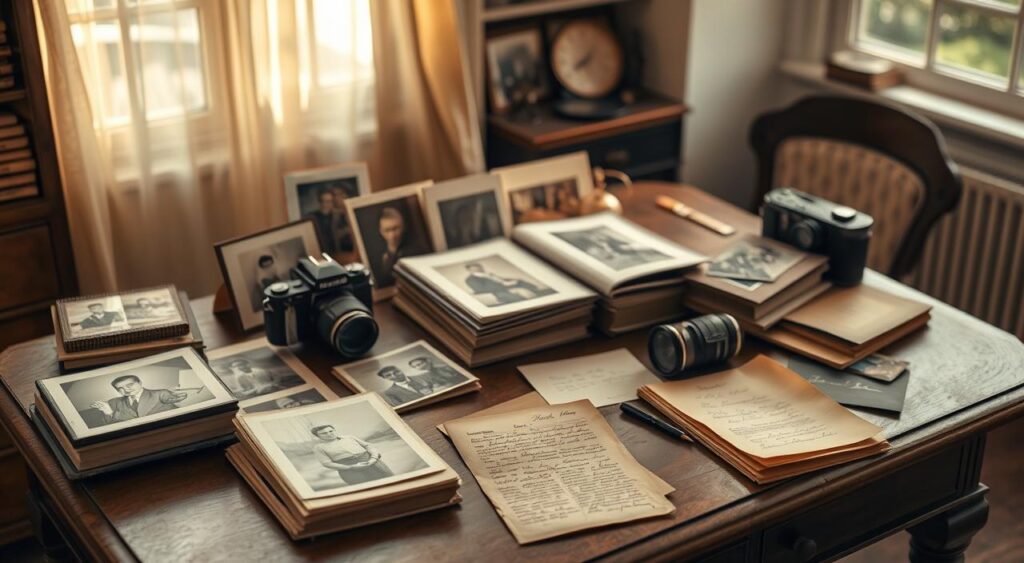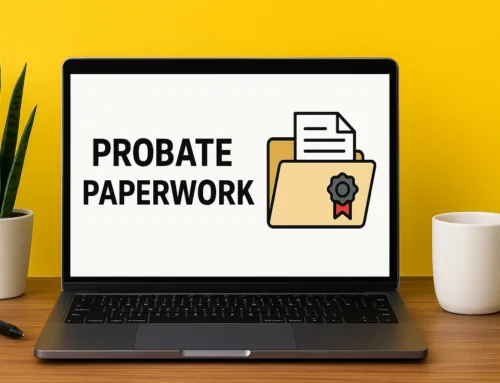Why Archiving Photos and Letters Matters
Archiving photos and letters at home is one of the most effective ways to preserve family history for heirs. Across British households, boxes of old photographs, handwritten notes, and keepsakes often sit untouched, risking damage or being forgotten. Without proper preservation, these stories may fade away instead of being passed to future generations.

Key Takeaways
- Archiving photos and letters protects family heritage from environmental damage.
- Using acid-free materials and stable conditions extends the lifespan of mementoes.
- Organised collections encourage storytelling across generations.
- Combining physical preservation with digital backups ensures long-term access.
- A structured plan helps manage large family collections effectively.
The Value of Physical Connections Archiving Photos and Letters
Printed photographs and handwritten letters create emotional experiences that digital files rarely match. From the textured paper to the personal notes scribbled on the back of photos, every imperfection contributes to authenticity.
Three major benefits of preserving originals:
- Authenticity – Originals carry cultural and personal context.
- Storytelling – Handling heirlooms sparks conversations across generations.
- Heritage proof – Items act as physical evidence of cultural traditions.
These materials not only document family milestones but also reflect broader social history—fashion trends, architecture, and even workplace changes captured in snapshots.
Building a Sustainable Photos and Letters Archiving System

The process begins by gathering scattered materials. Family albums, loose photographs, and letters should be collected before categorisation. Sorting chronologically or thematically creates order and clarity.
Well-maintained collections don’t just store objects—they curate stories. Every creased edge or faded note adds layers to your family’s narrative. By adopting sustainable methods, you transform fragile heirlooms into enduring histories.
Why a Family Photo Archive Is Essential
Family photos act as a visual timeline. A Victorian studio portrait, a 1960s holiday snap, or a modern graduation picture captures life events that written documents may omit.
Photos serve three important roles:
- Documenting family relationships over decades.
- Preserving cultural traditions through visual detail.
- Adding context to letters and diaries.
These collections also have educational value. Children can learn about past lifestyles, fashion, and traditions directly from preserved images. This strengthens the connection between past and present.
Essential Tools for Archiving Photos and Letters at Home
Using the right materials ensures long-term preservation. Inferior supplies often accelerate fading or chemical reactions. Below is a table of recommended archival essentials:
| Material | Purpose | Benefit |
|---|---|---|
| Acid-free boxes | Bulk storage | Prevents yellowing |
| Archival sleeves | Individual photo safety | Protects from fingerprints/oils |
| Cotton gloves | Handling delicate items | Reduces skin contact |
| Photo-safe pens | Labelling | Avoids chemical transfer |
Beyond preservation, organisation tools such as label makers, index cards, and colour-coded tags simplify large projects. A clean, well-lit workspace prevents accidental damage.
Preparing Your Archiving Workstation

A dedicated space helps maintain focus and consistency. Choose a quiet room where boxes can remain undisturbed between sessions.
Workspace essentials:
- A stable, moisture-resistant table.
- Adjustable lighting for detailed inspection.
- Shelving for categorised boxes.
- Trolleys for moving fragile items safely.
Establishing a clear workflow—damage assessment, identification, and placement—ensures steady progress. Documenting each step in a binder or spreadsheet creates a reference for future family members.
Effective Steps: How to Archive Family Photos in the UK
Large collections can feel overwhelming. The solution is a phased approach:
Three useful sorting methods:
| Sorting Method | Best For | Preservation Benefit |
|---|---|---|
| Chronological | Tracking milestones | Shows stylistic changes |
| Thematic | Events or holidays | Highlights recurring traditions |
| Family Branch | Different lineages | Simplifies inheritance division |
Strategic selection should focus first on fragile or damaged items. Involving relatives in decisions ensures multiple perspectives shape the collection.
Digital Backup and Scanning Options
Physical preservation is only half the solution. Digitising ensures security against fire, floods, or accidental loss.
Options for scanning and digitisation:
- Flatbed scanners – Ideal for small collections.
- Professional services – Best for delicate or oversized items.
- Smartphone apps – Convenient for quick sharing.
Files should be saved in standard formats such as JPEG or PNG, with descriptive metadata to enable future searching. Backup strategies should include both cloud storage and external drives.
📌 For professional support, UK families often use services such as ScanMyPhotos for large projects.
Protecting Photographs for Future Generations
To ensure longevity, both handling and storage conditions matter. Always hold photographs by the edges while wearing cotton gloves. Dust should be removed with soft brushes or microfibre cloths—never with liquids.
Storage best practices:
- Use acid-free boxes and sleeves.
- Maintain stable conditions below 21°C with 30–50% humidity.
- Avoid direct sunlight and exterior walls.
- Rotate items annually to check for deterioration.
These measures protect against common risks like mould and yellowing, extending the life of family treasures.
Balancing Physical and Digital Heritage
Some families worry digital backups will replace the intimacy of physical keepsakes. In reality, the two approaches complement each other. Originals preserve texture and authenticity, while digital versions provide accessibility and resilience.
Shared cloud folders also enable collaborative storytelling. Relatives can add captions, anecdotes, or contextual details, turning static files into evolving family narratives.
Connecting Archiving with Wider Heritage Projects
Archiving at home is part of a broader cultural trend. Community organisations across the UK run heritage workshops and exhibitions encouraging families to preserve and share their histories.
If you’re interested in sustainable preservation, read our guide on house clearance in London to understand how to responsibly manage larger family estates.
These resources show that personal archiving is not just about storage—it’s about contributing to a shared cultural memory.
Conclusion
Archiving photos and letters at home requires patience, planning, and the right materials. By combining physical preservation with digital backups, families safeguard their heritage for generations.
From creating a workstation and selecting acid-free supplies to scanning and cataloguing, every step ensures heirlooms remain accessible rather than forgotten. The reward is profound: curated stories that connect past, present, and future.
What begins as a practical project evolves into a gift—an organised legacy that heirs can cherish, explore, and expand upon.





